Hsin-Pai Cheng
RoCA: Robust Cross-Domain End-to-End Autonomous Driving
Jun 11, 2025Abstract:End-to-end (E2E) autonomous driving has recently emerged as a new paradigm, offering significant potential. However, few studies have looked into the practical challenge of deployment across domains (e.g., cities). Although several works have incorporated Large Language Models (LLMs) to leverage their open-world knowledge, LLMs do not guarantee cross-domain driving performance and may incur prohibitive retraining costs during domain adaptation. In this paper, we propose RoCA, a novel framework for robust cross-domain E2E autonomous driving. RoCA formulates the joint probabilistic distribution over the tokens that encode ego and surrounding vehicle information in the E2E pipeline. Instantiating with a Gaussian process (GP), RoCA learns a set of basis tokens with corresponding trajectories, which span diverse driving scenarios. Then, given any driving scene, it is able to probabilistically infer the future trajectory. By using RoCA together with a base E2E model in source-domain training, we improve the generalizability of the base model, without requiring extra inference computation. In addition, RoCA enables robust adaptation on new target domains, significantly outperforming direct finetuning. We extensively evaluate RoCA on various cross-domain scenarios and show that it achieves strong domain generalization and adaptation performance.
FALO: Fast and Accurate LiDAR 3D Object Detection on Resource-Constrained Devices
Jun 04, 2025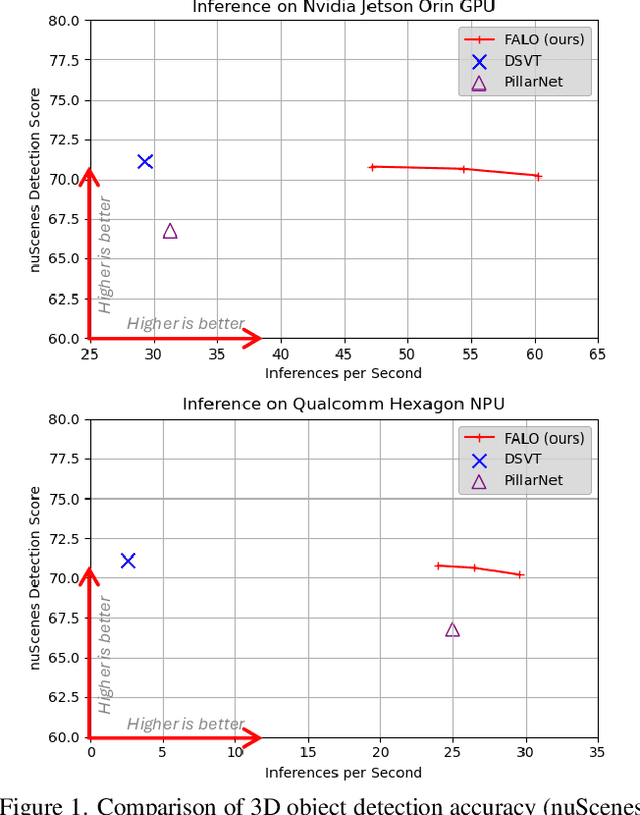
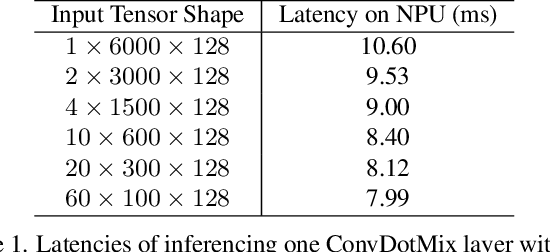
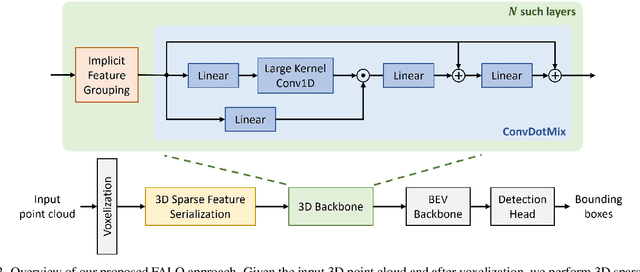
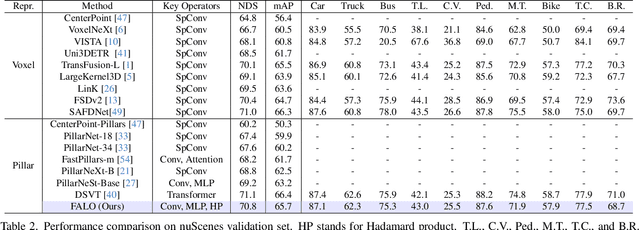
Abstract:Existing LiDAR 3D object detection methods predominantely rely on sparse convolutions and/or transformers, which can be challenging to run on resource-constrained edge devices, due to irregular memory access patterns and high computational costs. In this paper, we propose FALO, a hardware-friendly approach to LiDAR 3D detection, which offers both state-of-the-art (SOTA) detection accuracy and fast inference speed. More specifically, given the 3D point cloud and after voxelization, FALO first arranges sparse 3D voxels into a 1D sequence based on their coordinates and proximity. The sequence is then processed by our proposed ConvDotMix blocks, consisting of large-kernel convolutions, Hadamard products, and linear layers. ConvDotMix provides sufficient mixing capability in both spatial and embedding dimensions, and introduces higher-order nonlinear interaction among spatial features. Furthermore, when going through the ConvDotMix layers, we introduce implicit grouping, which balances the tensor dimensions for more efficient inference and takes into account the growing receptive field. All these operations are friendly to run on resource-constrained platforms and proposed FALO can readily deploy on compact, embedded devices. Our extensive evaluation on LiDAR 3D detection benchmarks such as nuScenes and Waymo shows that FALO achieves competitive performance. Meanwhile, FALO is 1.6~9.8x faster than the latest SOTA on mobile Graphics Processing Unit (GPU) and mobile Neural Processing Unit (NPU).
PADRe: A Unifying Polynomial Attention Drop-in Replacement for Efficient Vision Transformer
Jul 16, 2024



Abstract:We present Polynomial Attention Drop-in Replacement (PADRe), a novel and unifying framework designed to replace the conventional self-attention mechanism in transformer models. Notably, several recent alternative attention mechanisms, including Hyena, Mamba, SimA, Conv2Former, and Castling-ViT, can be viewed as specific instances of our PADRe framework. PADRe leverages polynomial functions and draws upon established results from approximation theory, enhancing computational efficiency without compromising accuracy. PADRe's key components include multiplicative nonlinearities, which we implement using straightforward, hardware-friendly operations such as Hadamard products, incurring only linear computational and memory costs. PADRe further avoids the need for using complex functions such as Softmax, yet it maintains comparable or superior accuracy compared to traditional self-attention. We assess the effectiveness of PADRe as a drop-in replacement for self-attention across diverse computer vision tasks. These tasks include image classification, image-based 2D object detection, and 3D point cloud object detection. Empirical results demonstrate that PADRe runs significantly faster than the conventional self-attention (11x ~ 43x faster on server GPU and mobile NPU) while maintaining similar accuracy when substituting self-attention in the transformer models.
CSCO: Connectivity Search of Convolutional Operators
Apr 26, 2024



Abstract:Exploring dense connectivity of convolutional operators establishes critical "synapses" to communicate feature vectors from different levels and enriches the set of transformations on Computer Vision applications. Yet, even with heavy-machinery approaches such as Neural Architecture Search (NAS), discovering effective connectivity patterns requires tremendous efforts due to either constrained connectivity design space or a sub-optimal exploration process induced by an unconstrained search space. In this paper, we propose CSCO, a novel paradigm that fabricates effective connectivity of convolutional operators with minimal utilization of existing design motifs and further utilizes the discovered wiring to construct high-performing ConvNets. CSCO guides the exploration via a neural predictor as a surrogate of the ground-truth performance. We introduce Graph Isomorphism as data augmentation to improve sample efficiency and propose a Metropolis-Hastings Evolutionary Search (MH-ES) to evade locally optimal architectures and advance search quality. Results on ImageNet show ~0.6% performance improvement over hand-crafted and NAS-crafted dense connectivity. Our code is publicly available.
DONNAv2 -- Lightweight Neural Architecture Search for Vision tasks
Sep 26, 2023

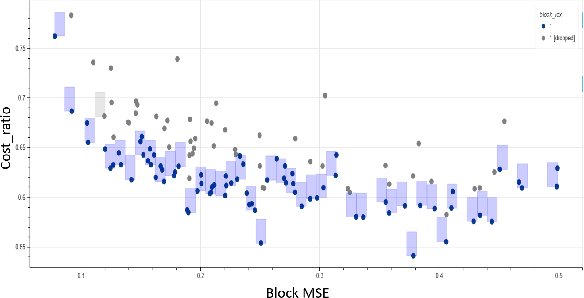

Abstract:With the growing demand for vision applications and deployment across edge devices, the development of hardware-friendly architectures that maintain performance during device deployment becomes crucial. Neural architecture search (NAS) techniques explore various approaches to discover efficient architectures for diverse learning tasks in a computationally efficient manner. In this paper, we present the next-generation neural architecture design for computationally efficient neural architecture distillation - DONNAv2 . Conventional NAS algorithms rely on a computationally extensive stage where an accuracy predictor is learned to estimate model performance within search space. This building of accuracy predictors helps them predict the performance of models that are not being finetuned. Here, we have developed an elegant approach to eliminate building the accuracy predictor and extend DONNA to a computationally efficient setting. The loss metric of individual blocks forming the network serves as the surrogate performance measure for the sampled models in the NAS search stage. To validate the performance of DONNAv2 we have performed extensive experiments involving a range of diverse vision tasks including classification, object detection, image denoising, super-resolution, and panoptic perception network (YOLOP). The hardware-in-the-loop experiments were carried out using the Samsung Galaxy S10 mobile platform. Notably, DONNAv2 reduces the computational cost of DONNA by 10x for the larger datasets. Furthermore, to improve the quality of NAS search space, DONNAv2 leverages a block knowledge distillation filter to remove blocks with high inference costs.
ZiCo-BC: A Bias Corrected Zero-Shot NAS for Vision Tasks
Sep 26, 2023Abstract:Zero-Shot Neural Architecture Search (NAS) approaches propose novel training-free metrics called zero-shot proxies to substantially reduce the search time compared to the traditional training-based NAS. Despite the success on image classification, the effectiveness of zero-shot proxies is rarely evaluated on complex vision tasks such as semantic segmentation and object detection. Moreover, existing zero-shot proxies are shown to be biased towards certain model characteristics which restricts their broad applicability. In this paper, we empirically study the bias of state-of-the-art (SOTA) zero-shot proxy ZiCo across multiple vision tasks and observe that ZiCo is biased towards thinner and deeper networks, leading to sub-optimal architectures. To solve the problem, we propose a novel bias correction on ZiCo, called ZiCo-BC. Our extensive experiments across various vision tasks (image classification, object detection and semantic segmentation) show that our approach can successfully search for architectures with higher accuracy and significantly lower latency on Samsung Galaxy S10 devices.
ScaleNAS: One-Shot Learning of Scale-Aware Representations for Visual Recognition
Nov 30, 2020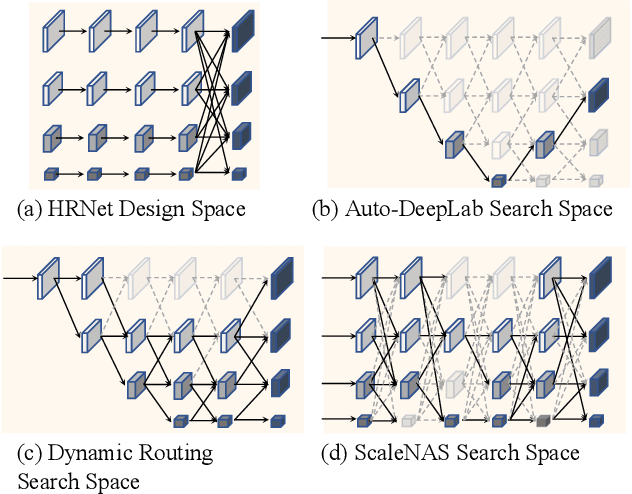

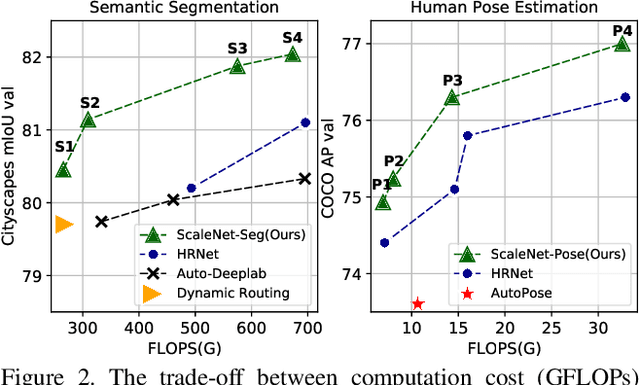
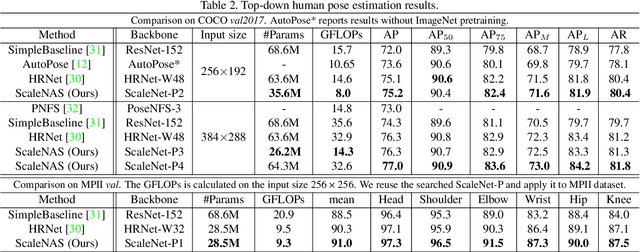
Abstract:Scale variance among different sizes of body parts and objects is a challenging problem for visual recognition tasks. Existing works usually design dedicated backbone or apply Neural architecture Search(NAS) for each task to tackle this challenge. However, existing works impose significant limitations on the design or search space. To solve these problems, we present ScaleNAS, a one-shot learning method for exploring scale-aware representations. ScaleNAS solves multiple tasks at a time by searching multi-scale feature aggregation. ScaleNAS adopts a flexible search space that allows an arbitrary number of blocks and cross-scale feature fusions. To cope with the high search cost incurred by the flexible space, ScaleNAS employs one-shot learning for multi-scale supernet driven by grouped sampling and evolutionary search. Without further retraining, ScaleNet can be directly deployed for different visual recognition tasks with superior performance. We use ScaleNAS to create high-resolution models for two different tasks, ScaleNet-P for human pose estimation and ScaleNet-S for semantic segmentation. ScaleNet-P and ScaleNet-S outperform existing manually crafted and NAS-based methods in both tasks. When applying ScaleNet-P to bottom-up human pose estimation, it surpasses the state-of-the-art HigherHRNet. In particular, ScaleNet-P4 achieves 71.6% AP on COCO test-dev, achieving new state-of-the-art result.
NASGEM: Neural Architecture Search via Graph Embedding Method
Jul 08, 2020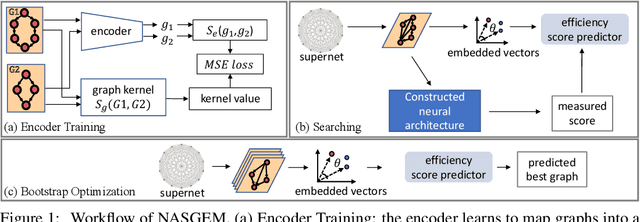
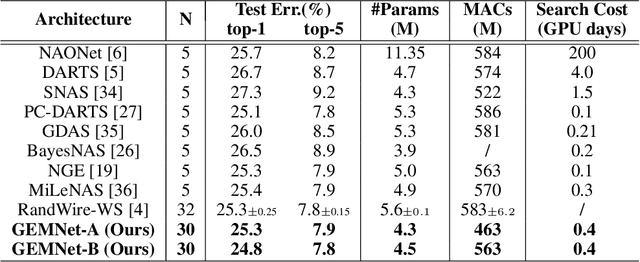
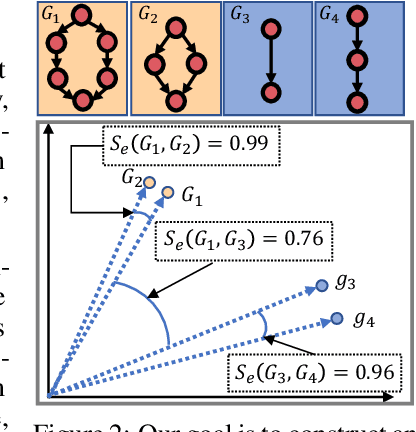
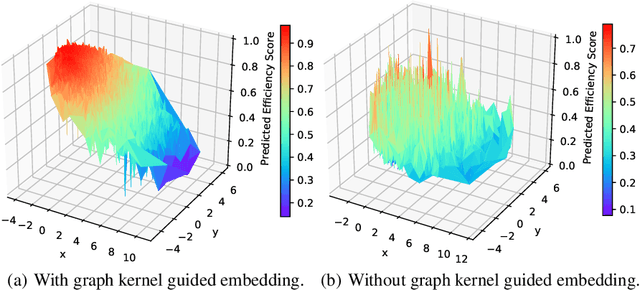
Abstract:Neural Architecture Search (NAS) automates and prospers the design of neural networks. Recent studies show that mapping the discrete neural architecture search space into a continuous space which is more compact, more representative, and easier to optimize can significantly reduce the exploration cost. However, existing differentiable methods cannot preserve the graph information when projecting a neural architecture into a continuous space, causing inaccuracy and/or reduced representation capability in the mapped space. Moreover, existing methods can explore only a very limited inner-cell search space due to the cell representation limitation or poor scalability. To enable quick search of more sophisticated neural architectures while preserving graph information, we propose NASGEM which stands for Neural Architecture Search via Graph Embedding Method. NASGEM is driven by a novel graph embedding method integrated with similarity estimation to capture the inner-cell information in the discrete space. Thus, NASGEM is able to search a wider space (e.g., 30 nodes in a cell). By precisely estimating the graph distance, NASGEM can efficiently explore a large amount of candidate cells to enable a more flexible cell design while still keeping the search cost low. GEMNet, which is a set of networks discovered by NASGEM, has higher accuracy while less parameters (up to 62% less) and Multiply-Accumulates (up to 20.7% less) compared to networks crafted by existing differentiable search methods. Our ablation study on NASBench-101 further validates the effectiveness of the proposed graph embedding method, which is complementary to many existing NAS approaches and can be combined to achieve better performance.
Ordering Chaos: Memory-Aware Scheduling of Irregularly Wired Neural Networks for Edge Devices
Mar 04, 2020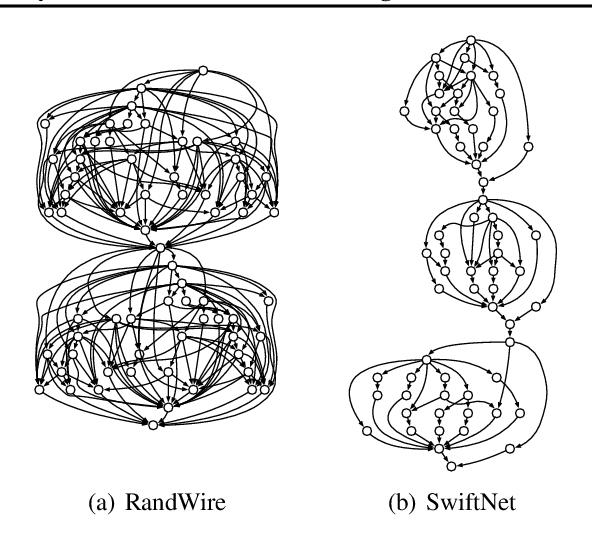

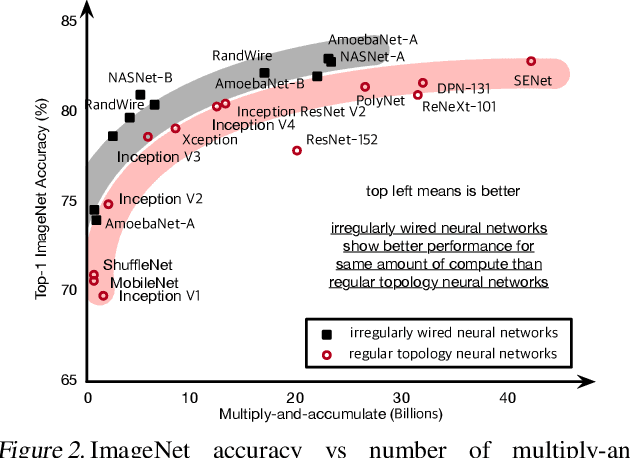
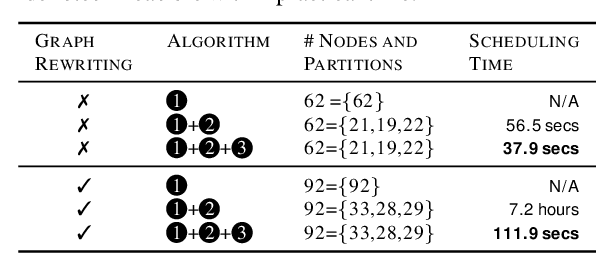
Abstract:Recent advances demonstrate that irregularly wired neural networks from Neural Architecture Search (NAS) and Random Wiring can not only automate the design of deep neural networks but also emit models that outperform previous manual designs. These designs are especially effective while designing neural architectures under hard resource constraints (memory, MACs, . . . ) which highlights the importance of this class of designing neural networks. However, such a move creates complication in the previously streamlined pattern of execution. In fact one of the main challenges is that the order of such nodes in the neural network significantly effects the memory footprint of the intermediate activations. Current compilers do not schedule with regard to activation memory footprint that it significantly increases its peak compared to the optimum, rendering it not applicable for edge devices. To address this standing issue, we present a memory-aware compiler, dubbed SERENITY, that utilizes dynamic programming to find a sequence that finds a schedule with optimal memory footprint. Our solution also comprises of graph rewriting technique that allows further reduction beyond the optimum. As such, SERENITY achieves optimal peak memory, and the graph rewriting technique further improves this resulting in 1.68x improvement with dynamic programming-based scheduler and 1.86x with graph rewriting, against TensorFlow Lite with less than one minute overhead.
AutoShrink: A Topology-aware NAS for Discovering Efficient Neural Architecture
Nov 21, 2019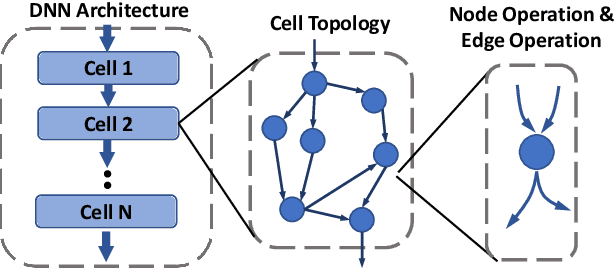
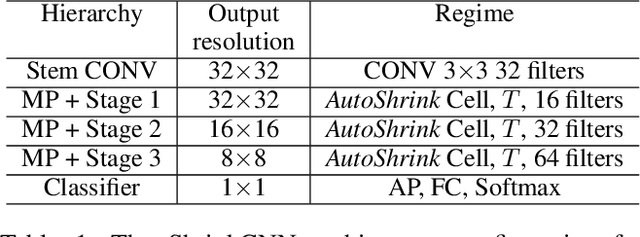

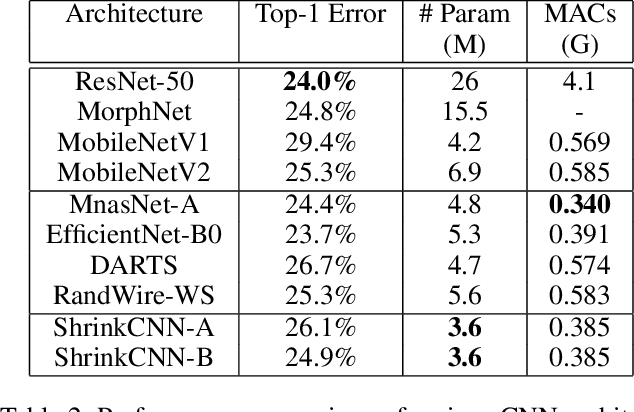
Abstract:Resource is an important constraint when deploying Deep Neural Networks (DNNs) on mobile and edge devices. Existing works commonly adopt the cell-based search approach, which limits the flexibility of network patterns in learned cell structures. Moreover, due to the topology-agnostic nature of existing works, including both cell-based and node-based approaches, the search process is time consuming and the performance of found architecture may be sub-optimal. To address these problems, we propose AutoShrink, a topology-aware Neural Architecture Search(NAS) for searching efficient building blocks of neural architectures. Our method is node-based and thus can learn flexible network patterns in cell structures within a topological search space. Directed Acyclic Graphs (DAGs) are used to abstract DNN architectures and progressively optimize the cell structure through edge shrinking. As the search space intrinsically reduces as the edges are progressively shrunk, AutoShrink explores more flexible search space with even less search time. We evaluate AutoShrink on image classification and language tasks by crafting ShrinkCNN and ShrinkRNN models. ShrinkCNN is able to achieve up to 48% parameter reduction and save 34% Multiply-Accumulates (MACs) on ImageNet-1K with comparable accuracy of state-of-the-art (SOTA) models. Specifically, both ShrinkCNN and ShrinkRNN are crafted within 1.5 GPU hours, which is 7.2x and 6.7x faster than the crafting time of SOTA CNN and RNN models, respectively.
 Add to Chrome
Add to Chrome Add to Firefox
Add to Firefox Add to Edge
Add to Edge